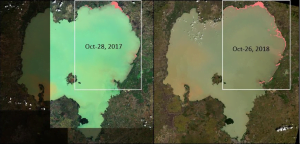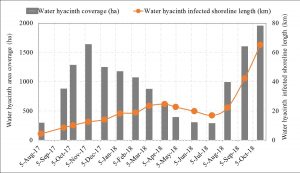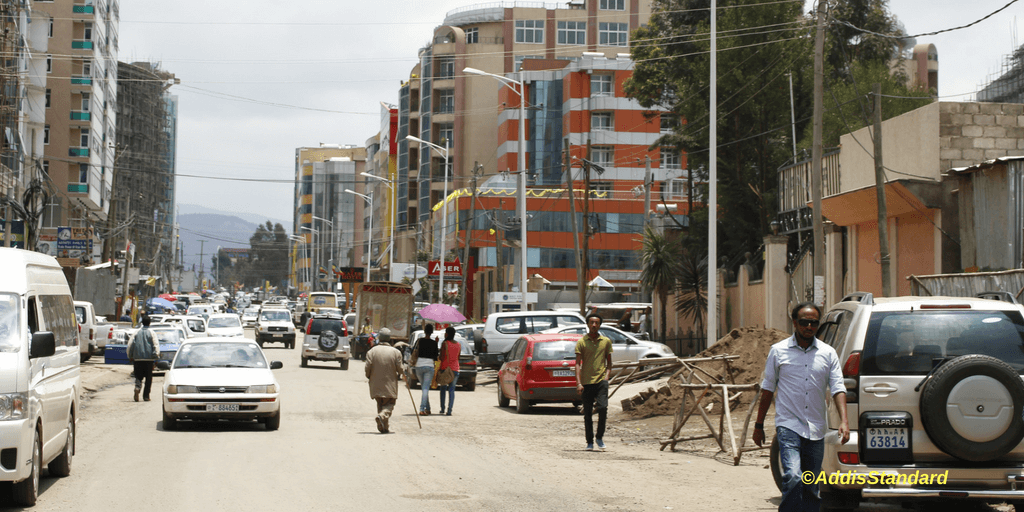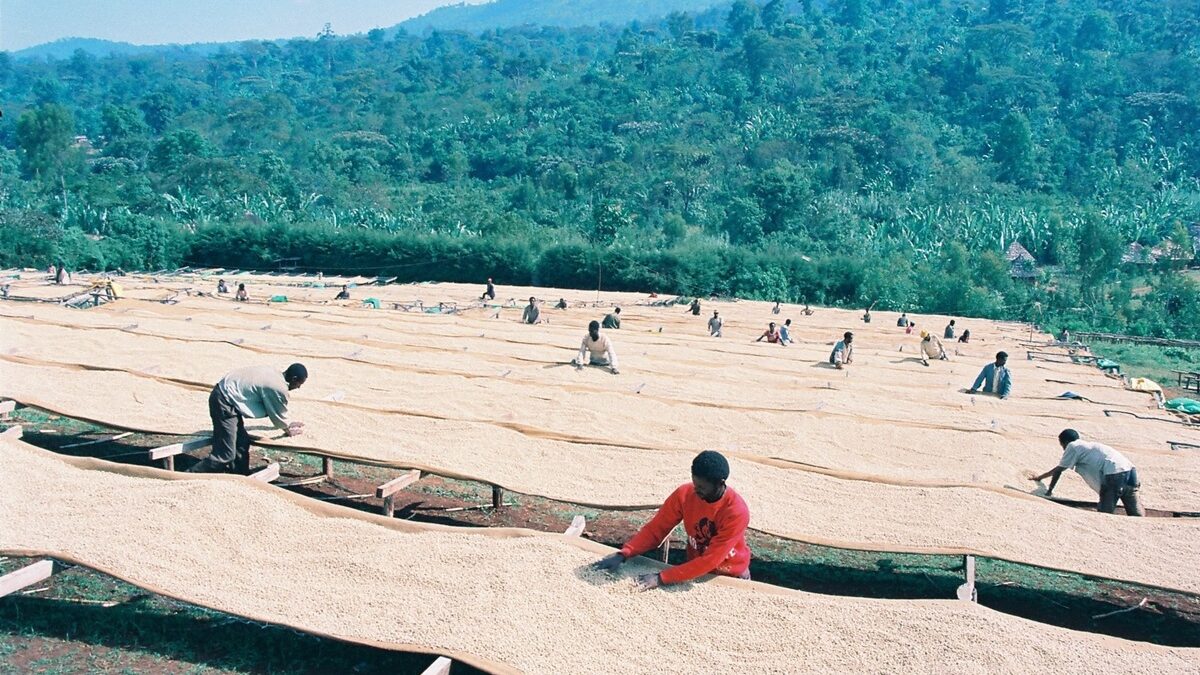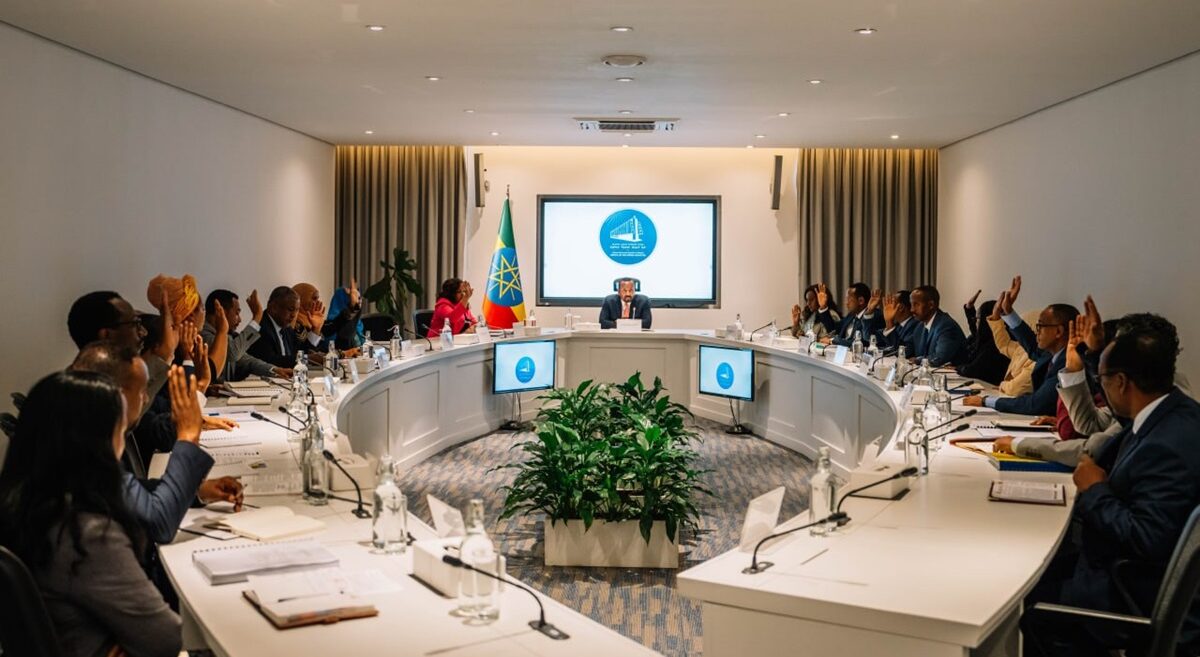Analysis: Why Ethiopia is unable to control water hyacinth from Lake Tana and what to do about it
 On Sunday October 27, Prime Minister Abiy Ahmed visited Lake Tana along with other high lever officials including DPM Demeke Mekonnen, and Amhara region president Gedu Andargachew
On Sunday October 27, Prime Minister Abiy Ahmed visited Lake Tana along with other high lever officials including DPM Demeke Mekonnen, and Amhara region president Gedu Andargachew
Solomon Kibret (PhD) and Abeyou Worqlul (PhD), for Addis Standard
Addis Abeba, October 31/2018 – Water hyacinth is one of the world’s most invasive, fast-growing and formidable water weed. The weed commonly forms dense, interlocking mats due to its rapid reproductive rate and complex root structures. These mats grow exponentially with the potential to develop twice their original size in just 7 days. It has invaded freshwater systems in over 50 countries in five continents and, according to a recent climate change model, its distribution may expand into higher latitudes as temperature rises. The most commonly documented effects of water hyacinth on aquatic ecosystem are: i) causes enormous water loss through evapotranspiration, that alters the water balance of the water body; ii) decreases dissolved oxygen concentrations beneath its mats by preventing the transfer of oxygen from the air to the water’s surface and by blocking sunlight used for photosynthesis by phytoplankton and submersed vegetation; iii) creates impediment to water flow, that increases sedimentation, and soil erosion; (d) obstructs navigation; iv) hampers fishing and dramatically reducing the catch, and the source of food and income for local populations; v) drastically alters the physical and chemical properties of the water and the environment where it infested, with detrimental effects on plants and animals; vi) reduces the activity of electrical power stations, jeopardizing the power supply of the country; and vii) serious threat to agricultural production, following the blockage of irrigation canals and drainage systems.
Lake Tana and its fight with water hyacinth
For the last 6-7 years, water hyacinth has been colonizing Lake Tana, the largest lake in Ethiopia. In 2011, it was noticed at the mouth of Megech River at the northeastern corner of the lake. Since then it has been expanding largely on the northeastern corner covering the eastern and northeastern shorelines of the lake. Currently, the weed has invaded about 84 km length of the shoreline from Gorgora to Tana Qirqos. The pace of weed removal has been far slower than the rate of weed expansion. Bahir Dar, the seat for the Amhara Regional Government, is still immune from the infestation – thanks to a peninsula at Tana Qirgos that holds back the weed from its southward expansion – but will it remain so in the future? Remote sensing data (high resolution satellite images) indicates that the weed is progressing at an alarming rate southwards (Figure 1). If control measures are not taken timely, the weed may invade the shores of Bahir Dar in early next year. Monthly satellite data indicates a wild expansion of the weed between August and October 2018 following the wet season – reaching a record high in October 2018 (Fig 2).
Figure 1. Satellite images showing water hyacinth distribution in October 2017 vs 2018.
Some efforts to control the weed (using manual removal and machine-based harvesting) have been applied, though the magnitude and intensity of control activities have not slowed down the expansion of the weed. So here we ask why control has been difficult to achieve. What needs to be done to control the weed? The road to control could take long or short depending on how fast we are addressing the following three major pitfalls.
Understanding the biology of water hyacinth
Understanding the nature of the weed is a key to devise effective control strategies and implement them timely. Longitudinal studies are required to understand the trend of the expansion of the weed, factors that nurture weed growth, identify effective control measures and assess the impact of the weed on aquatic life. This requires well-trained and experienced technical experts that can carry out the studies and devise site-specific control measures since the lake has diverse ecological and socioeconomic settings. Arsenal of experts such as plant scientists, hydrologists, environmentalists, aquatic biologists, and agriculturalists are needed to lead the work. The dialogue between these groups of experts is critical to determine and overview the impact of control measures on the people’s livelihood, environment, and aquatic ecosystem. Every activity should be well documented and evaluated so that the country may adopt the knowledge generated here to other lakes where the weed is causing a challenge. Outcomes on the groundwork need to be published as it contributes to the scientific knowledge. Local Universities such as Bahir Dar University, Debre Tabor University and University of Gondar and others should devise curriculum to produce trained manpower on lake management field. These institutions should allocate resources to support operational researches to support devising policies and strategies not only to control the weed but also to effectively manage the lake ecosystem.
Figure 2. Monthly trend of water hyacinth coverage around Lake Tana between August 2017 and October 2018 using remote sensing data. [Note: satellite data has uncertainties in quantification of the actual weed coverage. So data should only be used to see temporal trend – not to quantify the weed coverage
Moreover, one of the gaps in current control activities is data management and analysis. Researchers at local universities should develop monitoring and evaluation tools that are critically needed to quantify the spatial and temporal trend of weed coverage and use the data to inform decision on control activities. Various studies are also needed to identify long-term environmental management approaches to reduce sedimentation and nutrient accumulation in the lake. Overall, understanding the depth of the problem is critical to inform decision-makers on a set of measures that should be introduced to ensure a proper lake management as well as to execute formulated strategic plans.
A need for strong institution
A strong institutional setup is critically needed to coordinate, execute and monitor weed control and lake management efforts around Lake Tana. Management of the lake should have three major components that need to be coordinated – i) planning control activities based on prioritizing areas with expanding weed; ii) executing day-to-day activities by deploying well-trained experts that could supervise the work on the ground (i.e. operating harvesting machines, mobilizing the community for campaign, and following-up the implementation of biocontrol), iii) monitor sedimentation, nutrient inflow and wastewater discharges into the lake, and iv) implement watershed management to rehabilitate the degraded region and minimize soil erosion. All these tasks should be coordinately led by a well-structured institution with experienced technical experts. Currently, the Amhara Regional Forestry, Wildlife and Environmental Protection Authority is the institution that is given authority to manage not all but parts of the above mentioned activities. As its name indicates, this Authority has multiple activities – managing forestry, protecting the wildlife and carrying out environmental protection activities. Managing Lake Tana is thus an additional burden for this institute. Overall, there is a crucial need to establish a new institution that can oversee various components of lake management in order to restore a healthy lake ecosystem.
Think out of the box: Using research-proven measures
Research proven measures are important in order to ensure sustainability of control activities. Decision should be made based on Research proven measures are important in order to ensure sustainability of control activities. Use of an integrated approach (i.e. use of different control measures depending on topography) is critically required to halt the expansion of the infestation. Research is required to determine effective measures in different settings around the Lake. For instance, wetlands in the eastern shore of the lake are shallow and thus not convenient for machine-based harvesting. Biocontrol using host-specific weevils may work much better in such settings. Thinking out of the box is needed to shrink the map of weed coverage. Taking lessons from other countries that dealt with similar situation is of great importance.
All in all, one-fits-all approach does not work. Biocontrol by using weevils is currently under study by Bahir Dar University. Implementation is expected to begin this year. Other countries (e.g. United States) with such large scale weed infestation mainly use environmentally-friendly chemicals. A large area can be easily sprayed using chemicals to stop the fast progress of the weed. However, this method requires testing before large-scale use. No chemical study is currently underway for the weed around Lake Tana. It is time local Universities to start conducting research on specific chemicals used elsewhere to come-up with effective chemicals for water hyacinths around Lake Tana with no impact on other organisms. Overall, the road to controlling water hyacinth around Lake Tana is tough without strong institutional capacity and due attention by both Federal and Regional Governments. Local and international institutions should also strengthen their support to alleviate the problem and save the livelihood of over 3 million inhabitants whose lives depend on the lake. AS
Editor’s Note: Dr. Solomon Kibret is a biologist at the University of California, Irvine, United States. He can be reached at: s.kibret@gmail.com
Dr. Abeyou Worqlul is a hydrologist and remote-sensing scientist at the Blackland Research Center, Texas, United States. He can be reached at: aworqlul@brc.tamus.edu


